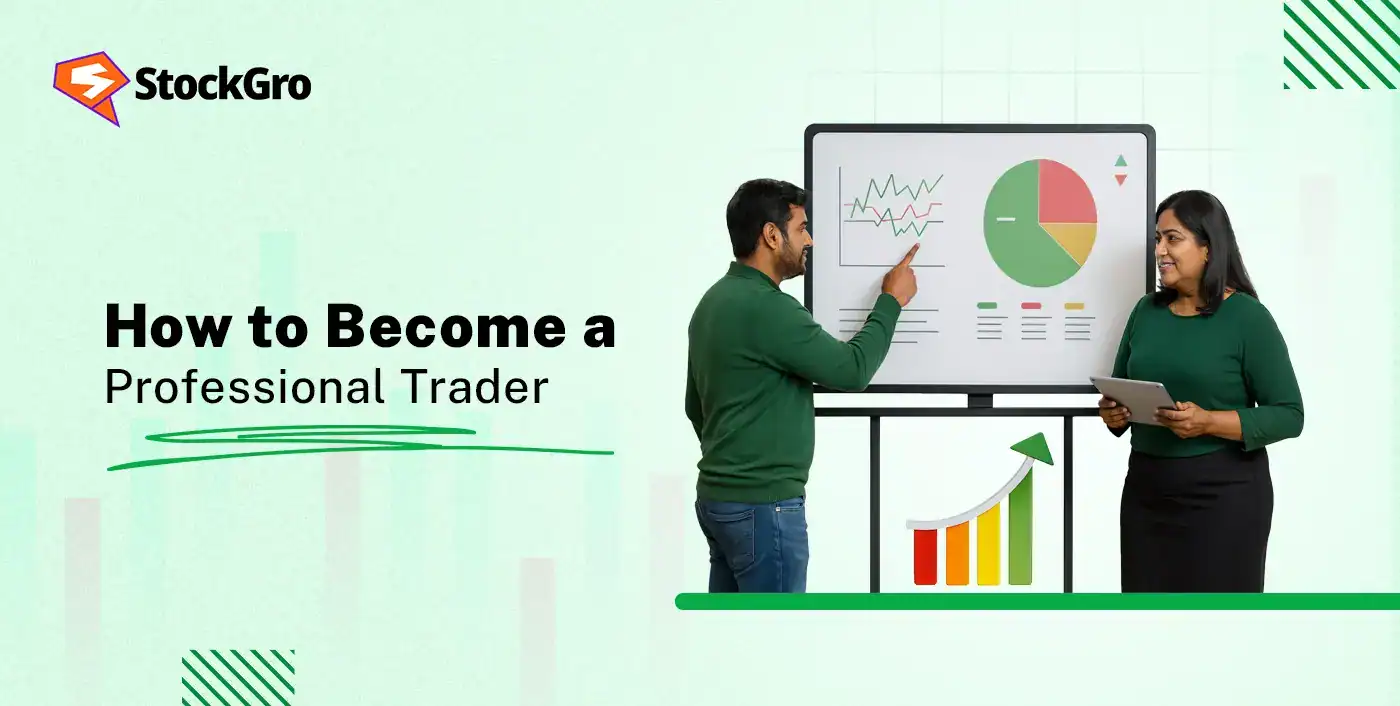
Turning a passion for markets into a professional career requires more than interest; it needs the right skills, discipline, and guidance. Without these, maintaining consistency is difficult, as highlighted by FY25 data, where retail traders lost ₹1.06 lakh crore, marking a 41% jump from the previous year, with 91% of traders in net loss. This displays the need for a structured approach to learning and trading. That’s where a clear roadmap on how to become a professional trader becomes essential. This blog explains the major steps involved in becoming a professional trader, from understanding a trading account and building core skills to managing risk and capital effectively, helping you create a strong foundation for a full-time trading career.
Essential Skills for a Professional Trader
Becoming a professional trader requires a specific set of skills to navigate the complexities of financial markets. The essential skills required to become professional trader are as follows:
- Technical and Fundamental Analysis
At the core of trading is the ability to analyse potential investments, which is done using two main methods:
- Fundamental analysis: This is the practice of looking at the underlying health of an asset to determine its “intrinsic value,” or what it should be worth. When it comes to stocks, this involves analysing a company’s balance sheet, leadership quality, and market strengths. This method helps a trader decide what to buy or sell based on its long-term potential.
- Technical analysis: This approach ignores a company’s financials and focuses on market statistics and price history instead. Traders study price charts and trading volumes to identify patterns and trends, believing that all information is already reflected in the price. This method helps a trader decide when to buy or sell.
Most professional traders use a blend of both. Today, this process is also being aided by new technology. Some platforms offer analysis by AI (Artificial Intelligence), which can process vast amounts of data to find patterns, acting as a powerful tool to support a trader’s decisions.
- Risk Management & Capital Preservation
Managing risk and protecting capital is arguably the most essential ability for staying in trading over the long run. Risk management does not eliminate losses as they are a natural part of trading but ensures that they remain limited and manageable. The primary goal is capital preservation, which simply means protecting the money in your trading account so you can stay in the game. The main methods you can practise for this involves:
- Position sizing: Risking only a small, fixed percentage (e.g., 1%) of your total account on one trade.
- Stop-loss orders: Setting a predetermined price to automatically exit a losing trade.
- Risk/reward ratios: focusing only on trades where the potential return clearly outweighs the possible loss, such as 3:1.
For example, if your account is ₹1,00,000, you use position sizing to risk only 1% (₹1,000). Suppose you purchase a stock at ₹100 and place a stop-loss order at ₹95, this means you’re risking ₹5 per share. This means you can buy 200 shares (₹1,000 risk / ₹5 per share). To achieve a 3:1 risk/reward ratio, you must set your profit target at ₹115 (a ₹15 gain).
- Trading Psychology & Discipline
Trading psychology is the skill of managing the key market emotions: fear and greed. Fear often leads to rushed selling, while greed might push you to hold onto a profitable trade for longer than ideal. Discipline is the ability to stick to your trading plan which defines your rules for entry, exit, and risk regardless of these emotions. It calls for patience to wait for favorable setups and discipline to follow through with consistent execution. Many traders use a trading journal to log their trades and feelings, helping them review performance, identify emotional mistakes, and stay accountable to their strategy.
- Choosing Your Market & Style
Not all trading is the same. There are many different markets to participate in, including stocks (equities), bonds, commodities (like gold or oil), and currencies (Forex). Each market has its own unique characteristics, volatility, and trading hours. Within these markets, traders can adopt different styles based on how long they hold their positions.
- Scalpers hold trades for just a few seconds or minutes.
- Intraday traders buy and sell all their holdings within the same trading session.
- Swing traders hold trades for several days or weeks to capture a larger market “swing.”
- Position traders typically keep investments for months or years, relying more heavily on long-term fundamental evaluations.
A professional trader must choose the market and style that best fit their personality, lifestyle, and risk tolerance. A day-trading style, for example, requires intense focus during market hours, while swing trading can be more flexible.
- Tools, Platforms & Technology
In modern trading, having access to the right software, data feeds, and tools is a major factor behind success. A trader’s foundational toolkit includes a high-performance computer, a stable internet connection, and a trading platform provided by a broker for executing orders and viewing market data. So many professionals supplement this with advanced charting software and live news feeds to gain a competitive edge.
A significant technology movement is the integration of artificial intelligence (AI) to process gigantic amounts of market information into clear insights. Platforms like Stoxo AI embrace this trend, offering an AI-driven research engine that automates complex analysis, allowing traders to make informed, data-backed decisions more efficiently.
For a professional, using a tool like Stoxo offers several advantages:
- AI-powered trading signals: The platform generates buy, sell, or hold signals by analysing numerous technical indicators, which helps in identifying potential entry and exit points with greater clarity.
- Intelligent stock screeners: Traders can use its powerful screeners to filter the entire market for securities that fit their specific criteria, such as industry, market capitalisation, or key financial metrics, making it easier to find suitable opportunities.
- Comprehensive fundamental insights: The tool provides comprehensive reports, including a full SWOT (Strengths, Weaknesses, Opportunities, Threats) analysis for individual companies, offering a well-rounded view of an asset’s potential.
- Building Your Trading Plan & Strategy
A trading plan for a professional trader is where you combine all the skills discussed so far. It’s your personal, written rulebook that merges your analysis methods with your specific risk rules. This plan is what ensures you trade with discipline, removing emotion from your decisions.
Building a structured, research-driven trading plan entirely from scratch can be a demanding process. This is precisely where an AI-powered research engine can be an invaluable co-pilot. As an example, we provided Stoxo.ai with this request:
“Create a trading plan for Nifty 50 stocks using RSI and VWAP with clear entry, exit, and stop-loss levels.”

Leave a Comment